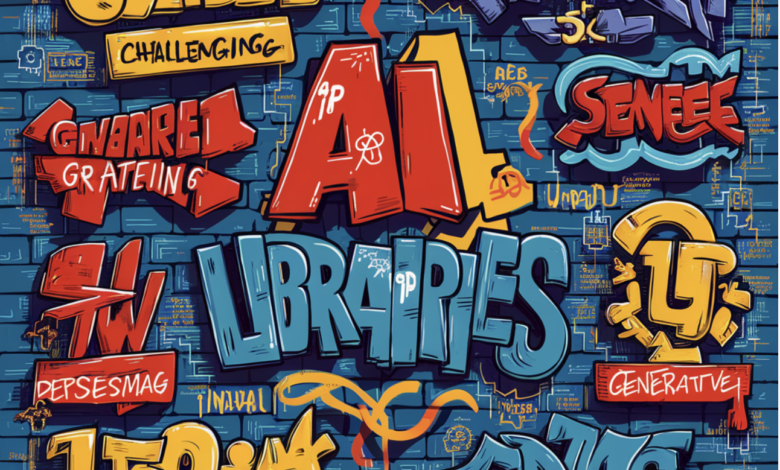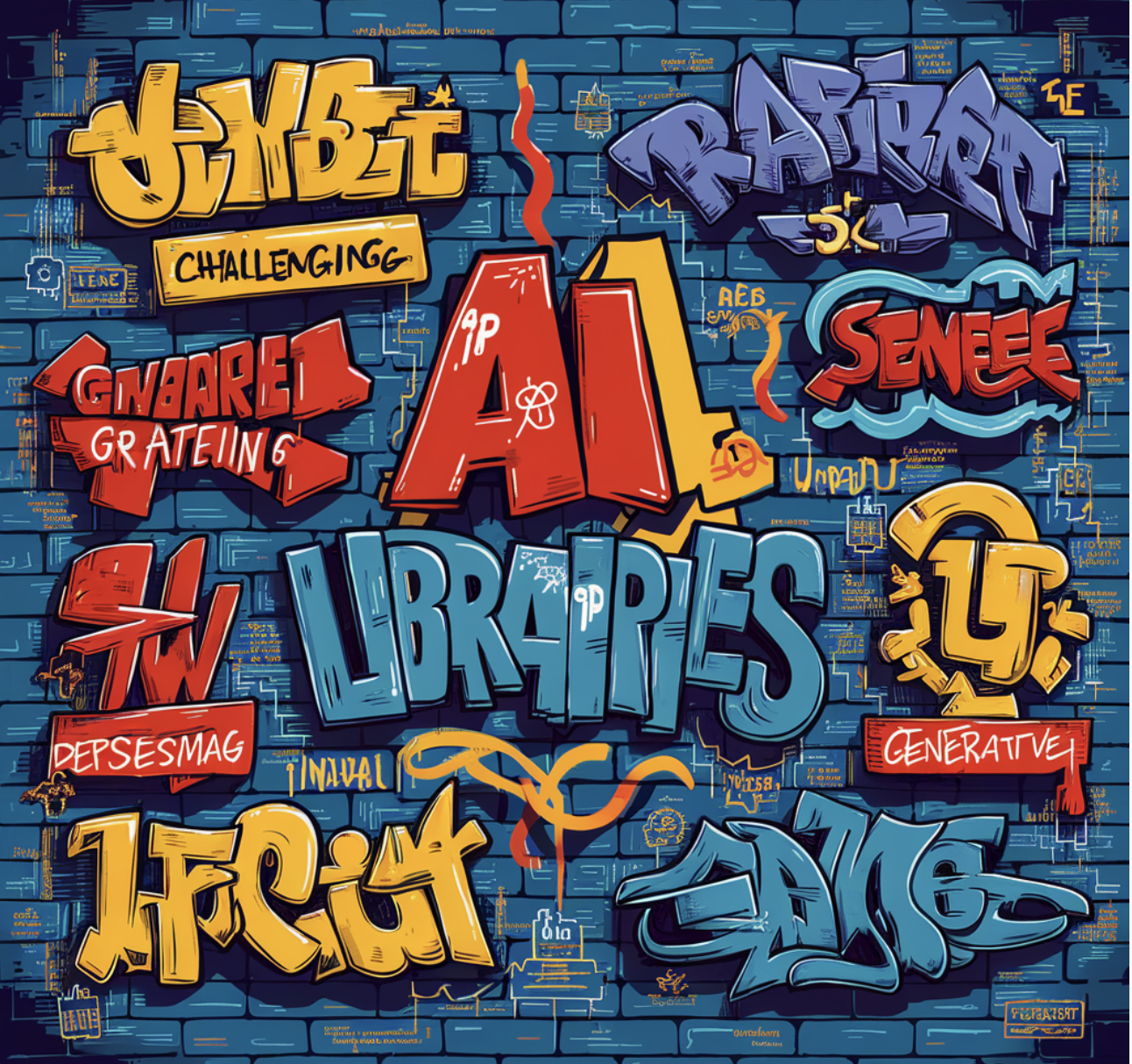Top 15 AI Libraries/Frameworks for Automatically Red-Teaming Your Generative AI Application

Prompt Fuzzer: The Prompt Fuzzer is an interactive tool designed to evaluate the security of GenAI application system prompts by simulating various dynamic LLM-based attacks. It assesses security by analyzing the results of these simulations, helping users fortify their system prompts accordingly. This tool specifically customizes its tests to fit the unique configuration and domain of the user’s application. The Fuzzer also features a Playground chat interface, allowing users to refine their system prompts iteratively, enhancing their resilience against a broad range of generative AI attacks. Users should be aware that using the Prompt Fuzzer will consume tokens.
Garak: Garak is a tool that evaluates whether an LLM can be made to fail in undesirable ways. It tests for vulnerabilities, including hallucination, data leakage, prompt injection, misinformation, toxicity generation, jailbreaks, and other potential weaknesses. Analogous to nmap for network security, Garak is a diagnostic tool for LLMs. It is freely available, and its developers are passionate about continuously enhancing it to support applications better.
HouYi: This repository contains the source code for HouYi, a framework designed to automatically inject prompts into applications integrated with large language models (LLMs) to test their vulnerability. Additionally, the repository includes a demo script that simulates an LLM-integrated application and shows how to deploy HouYi for such attacks. Users can apply HouYi to real-world LLM-integrated applications by creating their harnesses and defining the attack intention.
JailbreakingLLMs: There is an increasing focus on aligning LLMs with human values, yet these models are susceptible to adversarial jailbreaks that bypass their safety mechanisms. The Prompt Automatic Iterative Refinement (PAIR) algorithm has been developed to address this. Inspired by social engineering tactics, PAIR uses one LLM to automatically generate jailbreak prompts for another target LLM without human help. PAIR can efficiently create a jailbreak by making iterative queries, often in fewer than twenty attempts. This method demonstrates high success rates and is effective on various LLMs, including GPT-3.5/4, Vicuna, and PaLM-2.
LLMAttacks: Recent efforts have aimed to align LLMs to prevent them from generating objectionable content. LLMAttacks method that effectively prompts these models to produce undesirable outputs. By automatically generating adversarial suffixes through greedy and gradient-based searches, the process bypasses the need for manual crafting. These suffixes have proven transferable across multiple LLMs, including ChatGPT, Bard, and Claude, as well as open-source models like LLaMA-2-Chat and Pythia. This advancement highlights significant vulnerabilities in LLMs, underscoring the need for strategies to counteract such adversarial tactics.
PromptInject: Transformer-based LLMs like GPT-3 are extensively used in customer-facing applications but remain vulnerable to malicious interactions. The study introduces PROMPTINJECT, a framework for creating adversarial prompts through a mask-based iterative process. This research highlights how GPT-3 can be misaligned using straightforward, handcrafted inputs. It focuses on two attack methods: goal hijacking and prompt leaking. Findings reveal that even attackers with low skill levels can exploit the stochastic nature of GPT-3, posing significant long-tail risks to these models.
The Recon-ng Framework: Recon-ng is a comprehensive reconnaissance framework tailored for efficient, web-based, open-source intelligence gathering. It features a user interface similar to the Metasploit Framework, which eases the learning process but serves a different purpose. Unlike other frameworks aimed at exploitation or social engineering, Recon-ng is specifically designed for reconnaissance. Those looking to conduct exploits should use Metasploit, and the Social-Engineer Toolkit is recommended for social engineering. Recon-ng supports a modular architecture, making it accessible for Python developers to contribute. Users can refer to the Wiki and the Development Guide for starting points and details.
Buster: Buster is a sophisticated OSINT tool that facilitates a range of online investigations. It can retrieve social accounts linked to an email from various platforms such as Gravatar About.me, Myspace, Skype, GitHub, LinkedIn, and from records of previous breaches. Buster also finds links to mentions of the email across Google, Twitter, dark web search engines, and paste sites. Additionally, it can identify breaches associated with an email, reveal domains registered to an email via reverse WHOIS, generate potential emails and usernames for an individual, locate emails tied to social media accounts or usernames, and uncover a person’s work email.
WitnessMe: WitnessMe is a web inventory tool inspired by Eyewitness and designed for extensibility, enabling custom functions using its backend-driven headless browser via the Pyppeteer library. This tool stands out for its ease of use with Python 3.7+, Docker compatibility, and avoidance of installation dependencies. It supports extensive parsing of large Nessus and NMap XML files, offers CSV and HTML reporting, and features HTTP proxy support and a RESTful API for remote operations. WitnessMe includes a CLI for reviewing scan results and is optimized for deployment to cloud platforms like GCP Cloud Run and AWS ElasticBeanstalk. Additionally, it offers signature scanning and terminal-based screenshot previews.
LLM Canary: The LLM Canary tool is an accessible, open-source security benchmarking suite that enables developers to test, assess, and compare LLMs. This tool helps developers identify security trade-offs when choosing a model and address vulnerabilities before integration. It incorporates test groups aligned with the OWASP Top 10 for LLMs and stays updated with the latest threats. Users of LLM Canary can identify and evaluate potential vulnerabilities, run simultaneous tests on multiple LLMs for efficiency, compare results against benchmarks or previous tests, and design custom tests for comprehensive security evaluation.
PyRIT: PyRIT, developed by the AI Red Team, is a library designed to enhance the robustness evaluation of LLM endpoints, targeting harm categories such as fabrication, misuse, and prohibited content. This tool automates AI red teaming tasks, freeing up resources to handle more complex issues, and identifies security and privacy harms, including malware generation and identity theft. It provides a benchmark for researchers to compare current model performance against future iterations, helping detect any degradation. At Microsoft, PyRIT is used to refine product versions and meta prompts to better safeguard against prompt injection attacks.
LLMFuzzer: LLMFuzzer is an innovative open-source fuzzing framework tailored for LLMs and their API integrations. It’s ideal for security enthusiasts, pen-testers, and cyber security researchers who aim to uncover and exploit vulnerabilities in AI systems. The tool streamlines the testing process with features like robust fuzzing, LLM API integration testing, various fuzzing strategies, and a modular design for easy expansion. Future enhancements include additional attacks, HTML report generation, diverse connectors and comparers, proxy support, side LLM observation, and an autonomous attack mode.
PromptMap: Prompt injection is a security vulnerability where malicious prompts manipulate a ChatGPT instance to perform unintended actions. The tool “promptmap” automates the testing of these attacks by analyzing the context and purpose of your ChatGPT rules. Using your system prompts, it crafts tailored attack prompts and tests them on a ChatGPT instance. promptmap then evaluates the success of the prompt injection by analyzing the responses from your ChatGPT instance. This tool helps identify and mitigate potential vulnerabilities by simulating real attack scenarios.
Gitleaks: Gitleaks is a Static Application Security Testing (SAST) tool designed to detect hardcoded secrets such as passwords, API keys, and tokens in git repositories. It offers a straightforward interface for scanning your code for historical and current secrets. Users can easily run Gitleaks locally with a simple command, and it identifies sensitive information, providing details like file location and author. Gitleaks can be installed via Homebrew, Docker, or Go, and binaries are available for various platforms. It also supports integration as a pre-commit hook or a GitHub action to enhance security practices.
Cloud_enum: The multi-cloud OSINT tool is designed to identify public resources across AWS, Azure, and Google Cloud. For Amazon Web Services, it can enumerate open or protected S3 buckets and various awsapps like WorkMail and WorkDocs. In Microsoft Azure, the tool can discover storage accounts, open blob storage containers, hosted databases, virtual machines, and web apps. The Google Cloud Platform detects open or protected GCP and Firebase buckets, Firebase Realtime Databases, Google App Engine sites, and Cloud Functions, including the enumeration of projects and regions and the brute-forcing of function names. It also identifies open Firebase apps.
Hello, My name is Adnan Hassan. I am a consulting intern at Marktechpost and soon to be a management trainee at American Express. I am currently pursuing a dual degree at the Indian Institute of Technology, Kharagpur. I am passionate about technology and want to create new products that make a difference.





